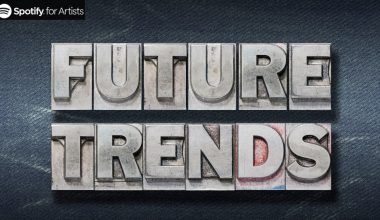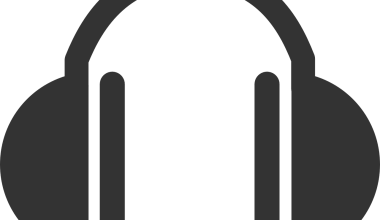Creating cover songs is a popular way for musicians to pay homage to their favorite artists while showcasing their own talent. However, many artists often ask, “Do I have to pay royalties for cover songs?” The short answer is yes, but the process can be complex. In this blog, we’ll explore everything you need to know about cover song royalties, ensuring you’re well-informed and compliant with the law.
Understanding Cover Songs
A cover song is a new performance or recording of a previously released track by someone other than the original artist. Covering songs is a great way to express your style and gain exposure. However, performing someone else’s work comes with legal responsibilities.
Why You Need to Pay Royalties
When you record and release a cover song, you are using someone else’s copyrighted material. Copyright laws protect the original creators, ensuring they receive compensation for the use of their work. Therefore, you must obtain proper licensing and pay royalties to avoid legal issues.
Types of Licenses for Cover Songs
- Mechanical License: This is required to reproduce and distribute a cover song. It ensures that the original songwriter is compensated. Organizations like the Harry Fox Agency and services like Songfile can help you obtain this license.
- Synchronization License: If you plan to use the cover song in a video (e.g., YouTube, film), you need a synchronization license. This allows you to synchronize the song with visual media.
Obtaining a Mechanical License
The process of obtaining a mechanical license for a cover song is relatively straightforward:
- Identify the Publisher: Find out who owns the rights to the song. This information is usually available through performance rights organizations (PROs) like ASCAP, BMI, or SESAC.
- Request the License: Contact the publisher or use an intermediary service like the Harry Fox Agency or Songfile to request a mechanical license.
- Pay the Fees: The license fee is typically calculated per copy of the song you plan to distribute. Rates can vary, so it’s important to get an accurate quote.
Synchronization License
For using a cover song in videos, a synchronization license is required. This type of license can be more challenging to obtain because it involves negotiating directly with the copyright owner. Here’s a brief overview:
- Contact the Publisher: Similar to a mechanical license, you need to identify and contact the publisher for permission.
- Negotiate Terms: Discuss the terms of use, including where the video will be shown and for how long.
- Pay the Fees: Fees for sync licenses can vary greatly depending on the use case and the song’s popularity.
Performance Royalties
Whenever a cover song is performed live, whether in a venue or on a streaming platform, performance royalties are owed. These royalties are typically managed by PROs, who collect fees from venues and broadcasters and distribute them to the songwriters.
Common Scenarios and Solutions
- Releasing a Cover on Streaming Platforms: If you’re releasing your cover on platforms like Spotify or Apple Music, you need a mechanical license. These platforms also have their own agreements with PROs to handle performance royalties.
- YouTube Covers: For YouTube, you need both a mechanical and synchronization license. Additionally, YouTube’s Content ID system helps manage and monetize cover videos.
- Live Performances: Venues usually pay blanket license fees to PROs, which cover the performance of copyrighted songs, including covers.
Consequences of Not Paying Royalties
Failing to pay royalties and obtain proper licensing can lead to severe consequences, including:
- Legal Action: The copyright owner can sue for damages, leading to costly legal battles.
- Takedown Notices: Platforms like YouTube can remove your content if it infringes on copyright.
- Loss of Reputation: Engaging in copyright infringement can damage your reputation as an artist.
Tips for Covering Songs Legally
- Do Your Research: Before recording a cover, research the song’s copyright status and the necessary licenses.
- Use Licensing Services: Utilize services like the Harry Fox Agency, Songfile, or Loudr to streamline the licensing process.
- Understand the Costs: Be aware of the costs associated with mechanical and synchronization licenses and factor them into your budget.
- Stay Informed: Copyright laws can change, so it’s important to stay updated on the latest regulations and licensing requirements.
Deep Dive into Licensing Processes
Understanding the licensing processes for cover songs can save you time and ensure that you remain compliant with copyright laws. Here’s a deeper look into the steps involved:
Step-by-Step Guide to Obtaining a Mechanical License
- Research the Song: Determine who owns the copyright to the song you wish to cover. This information can be found through databases managed by PROs like ASCAP, BMI, or SESAC.
- Choose a Licensing Agency: Use agencies such as the Harry Fox Agency or online platforms like Songfile to obtain the necessary licenses.
- Submit a License Request: Provide detailed information about your cover song, including the title, original artist, and your intended distribution method.
- Calculate the Fees: The fee for a mechanical license is typically based on the number of copies you plan to distribute. For digital distribution, this might include streams and downloads.
- Receive Confirmation: Once the agency processes your request, you’ll receive confirmation of your license, allowing you to legally distribute your cover song.
- Identify the Copyright Holder: As with mechanical licenses, you need to know who holds the copyright to the song.
- Contact the Copyright Holder: Reach out to the copyright holder or their representative to request permission to use the song in your video.
- Negotiate Terms: Discuss how you plan to use the song, where it will be published, and the duration of use. Negotiating a fair rate is crucial.
- Draft an Agreement: Ensure that all terms are clearly outlined in a written agreement. This document should cover all aspects of the usage rights and fees.
- Secure the License: Once both parties agree to the terms, finalize the payment, and secure the license. You can then legally use the cover song in your video projects.
Exploring Performance Royalties in Depth
Performance royalties are crucial for compensating songwriters whenever their music is performed publicly. Here’s how it works:
- PROs and Their Role: Performance rights organizations like ASCAP, BMI, and SESAC collect royalties on behalf of songwriters and publishers. They license music use to venues, radio stations, and streaming services.
- Venue Licensing: Venues that host live performances pay annual fees to PROs. These fees allow artists to perform cover songs legally without worrying about individual royalties.
- Streaming Platforms: Platforms like Spotify and Apple Music pay performance royalties based on the number of streams. These royalties are distributed to the songwriters through their respective PROs.
Practical Tips for Musicians
As a musician, understanding and managing your licensing obligations is key to avoiding legal pitfalls. Here are some practical tips:
- Plan Ahead: Begin the licensing process well before your release date to avoid delays.
- Keep Records: Maintain detailed records of all licensing agreements and payments.
- Educate Yourself: Stay informed about changes in copyright laws and licensing requirements.
- Consult Professionals: When in doubt, seek advice from music industry professionals or legal experts.
Case Study: A Successful Cover Song
To illustrate the process, let’s look at a successful cover song. Johnny, an independent artist, wanted to cover “Imagine” by John Lennon.
- Research: Johnny found that the song is still under copyright.
- Mechanical License: He used Songfile to obtain a mechanical license, paying a fee per copy he planned to distribute.
- Synchronization License: For his YouTube video, Johnny contacted the publisher and negotiated a synchronization license.
- Release and Monetization: Johnny released his cover on streaming platforms and YouTube, ensuring all royalties were paid. His cover gained traction, and he was able to monetize it without legal issues.
Conclusion
In summary, the answer to “do I have to pay royalties for cover songs” is a resounding yes. Understanding and navigating the licensing landscape is crucial for any artist looking to cover songs legally. By obtaining the proper licenses and paying the necessary royalties, you can enjoy the creative process and share your music with the world without the risk of legal repercussions.
Cover songs are a wonderful way to connect with your audience and show your musical versatility. By respecting copyright laws and paying royalties, you not only support the original artists but also build a sustainable and respectful music career.
For further reading, explore these related articles:
- Essential Tips for Designing Cover Art for Your Song: What to Avoid
- How to Upload Your Song on Apple Music or iTunes?
- Why is There a Need for Digital Aggregators in Music Distribution?
For additional resources on music marketing and distribution, visit Deliver My Tune.






